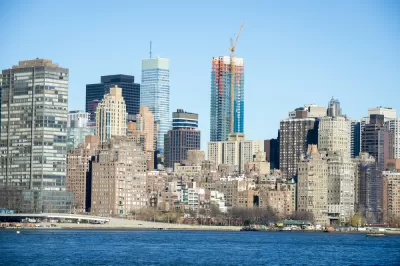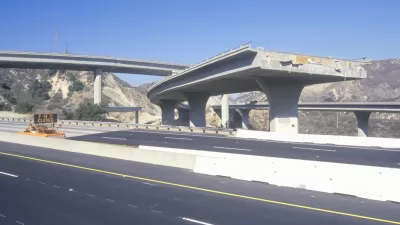Resilience standards—like LEED--could transform building practices. But there are many standards to choose from, and few are aware that they exist. A new report helps planners and builders choose the right standard for every project.

In this era of frequent and costly disasters—both natural and manmade—there is an urgent need to upgrade the resilience of the built environment. Planners and builders are stepping up to the challenge. Public officials, too: In July, local elected officials gathered at the Resilient Cities Summit in Vermont and New York City hosted a major meeting of urban resilience practitioners at the first 100RC Urban Resilience Summit.
To complement these efforts, various public- and private-sector groups have issued voluntary resilience standards—a rapidly proliferating array of certifications, benchmarking systems and design principles. The creators of these standards hope to catalyze a shift in building norms, much as the LEED (Leadership in Energy and Environmental Design) program fostered a move toward more sustainable buildings.
But while LEED has won broad acceptance, resilience standards are at a much earlier stage of development. For one thing, "In our interview research, many developers did not know the standards existed," says Kathryn Wright of Meister Consultants Group in Boston. "When they are asked to plan for resilience, they wind up reinventing the wheel." Wright recently co-authored a new report that sorts through the emerging resilience standards, in order to help practitioners make better decisions and improve the state of practice for the field as a whole.
The report reveals a crowded landscape of standards addressing a range of hazards, from flooding to earthquakes and terrorism. The standards' creators are an equally wide-ranging group—from the U.S. Green Building Council to the Department of Defense. Some standards, for example, operate at the facilities level, focusing on a single building or a campus-level electrical grid. Others, still under development, will operate at the district scale, assessing the vulnerabilities of larger systems such as waste and transportation.
Inevitably, the standards offer differing measures of resilience. Many are narrowly performance-based, assessing how a building (or a system within a building) will withstand certain shocks or stresses. Others take a more holistic approach, helping decision makers assess their facilities' vulnerabilities and prioritize responses accordingly.
A few pioneering standards—including the Resiliency Action List (RELi) [pdf], Building Resilience—Los Angeles (BRLA), and the Enterprise Green Communities certification [pdf]—consider buildings within their larger social context, and seek to build cohesive, adaptive communities. For example, BRLA encourages facilities managers to engage with neighbors and think expansively about investments in community resilience.
Confronted with this vast array of standards, what's a resilience-minded planner to do? The Meister report offers a good starting point; its matrix can help identify the right standard for a particular project, saving time and resources.
More broadly, how does resilience planning become the norm? Many players have important roles here. Major real estate industry associations could raise awareness about standards and share information about resilient building techniques. The insurance and reinsurance industries—which stand to benefit mightily from risk mitigation—could incentivize the adoption of resilience standards. Lenders and financiers, as well as regulators and state and local officials, could follow suit. In short, industry outreach, combined with opportunities to monetize investments in resilience, could greatly speed the uptake of resilience standards.
This summer's conferences on resilience are evidence of growing political will to address this issue. "Local officials understand the urgent need to advance the preparedness of the built environment," says Jon Crowe, vice president at Meister Consultants Group, who attended the Resilient Cities Summit. "Real progress on resilience will require a cooperation and commitment from both the public and private sectors," he adds.
Planners and builders have an immediate role to play. Today, they can choose from an ever-growing menu of resilience standards. And, as with early adopters of LEED, they can improve the system by communicating challenges and results to the organizations developing the standards. "The standards are out there," says Kathryn Wright, "it's time to put them to use."
—
Laurie Mazur is editor of the Island Press Urban Resilience Project, which is supported by The Kresge Foundation and The JPB Foundation.

Manufactured Crisis: Losing the Nation’s Largest Source of Unsubsidized Affordable Housing
Manufactured housing communities have long been an affordable housing option for millions of people living in the U.S., but that affordability is disappearing rapidly. How did we get here?

Americans May Be Stuck — But Why?
Americans are moving a lot less than they once did, and that is a problem. While Yoni Applebaum, in his highly-publicized article Stuck, gets the reasons badly wrong, it's still important to ask: why are we moving so much less than before?

Using Old Oil and Gas Wells for Green Energy Storage
Penn State researchers have found that repurposing abandoned oil and gas wells for geothermal-assisted compressed-air energy storage can boost efficiency, reduce environmental risks, and support clean energy and job transitions.

California's Canal Solar Projects Aim to Conserve Resources and Expand Clean Energy
California’s Project Nexus has begun generating electricity from solar panels installed over irrigation canals, with researchers and state agencies exploring statewide expansion to conserve water and boost clean energy production.

HHS Staff Cuts Gut Energy Assistance Program
The full staff of a federal program that distributes heating and cooling assistance for low-income families was laid off, jeopardizing the program’s operations.

San Antonio Remains Affordable as City Grows
The city’s active efforts to keep housing costs down through housing reforms and coordinated efforts among city agencies and developers have kept it one of the most affordable in the nation despite its rapid population growth.
Urban Design for Planners 1: Software Tools
This six-course series explores essential urban design concepts using open source software and equips planners with the tools they need to participate fully in the urban design process.
Planning for Universal Design
Learn the tools for implementing Universal Design in planning regulations.
Heyer Gruel & Associates PA
City of Moreno Valley
Institute for Housing and Urban Development Studies (IHS)
City of Grandview
Harvard GSD Executive Education
Salt Lake City
NYU Wagner Graduate School of Public Service
City of Cambridge, Maryland





























